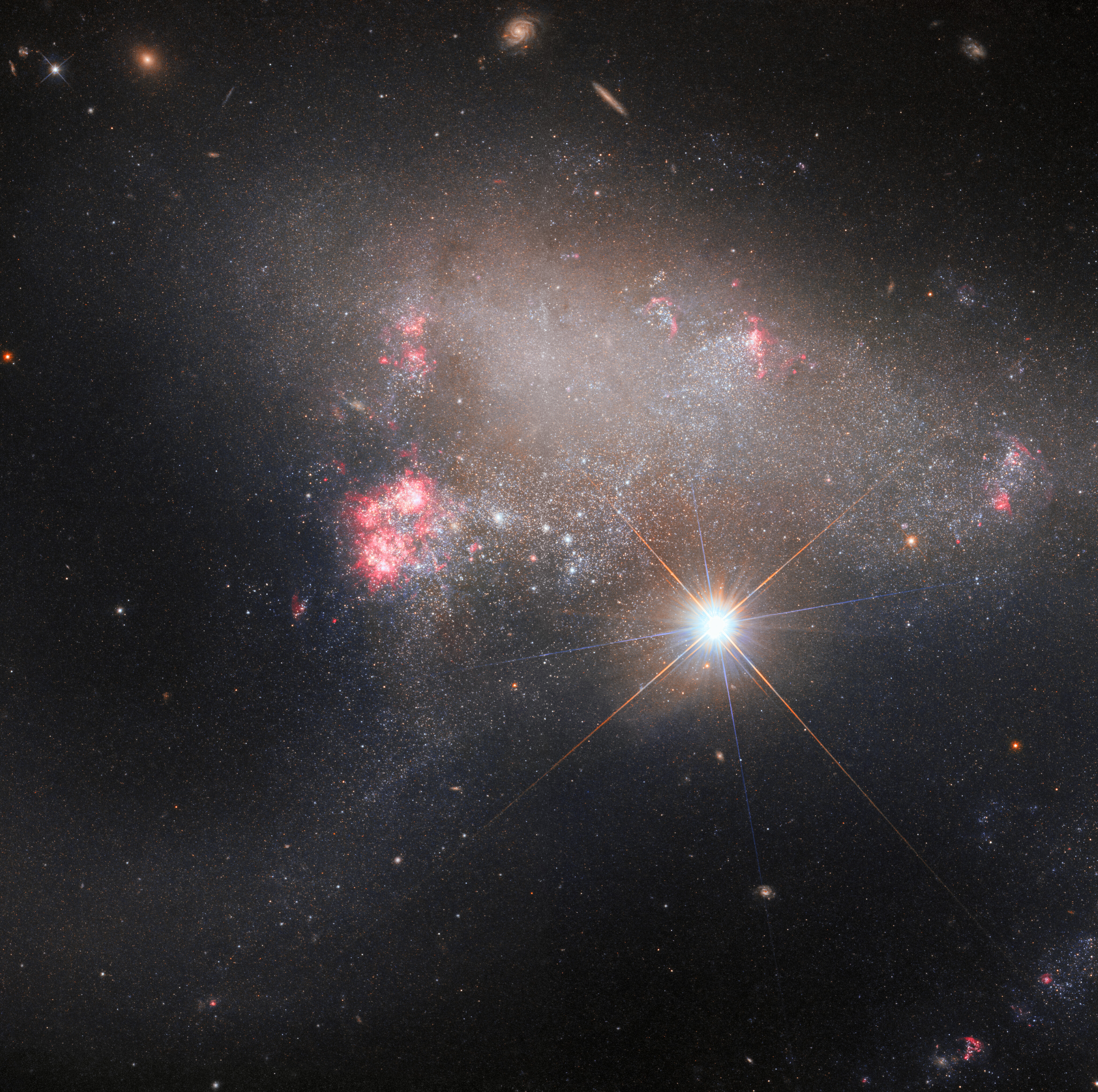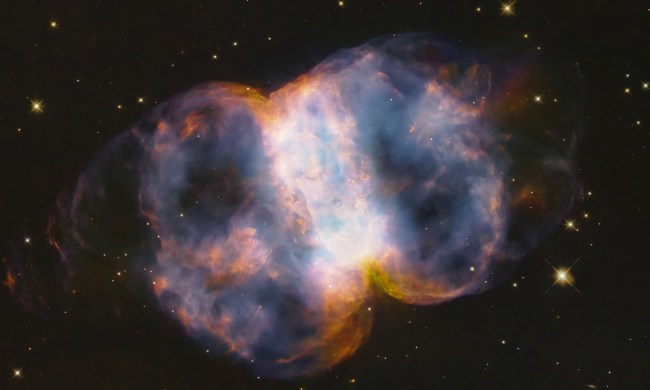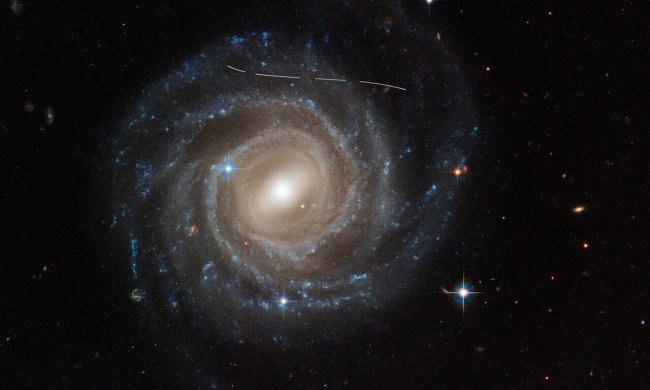This week’s image from the Hubble Space Telescope is notable for the way it was composed as much as for the object it shows. Composed of two different exposures which have been merged, it shows the star BD+17 2217 shining over the background irregular galaxy Arp 263.
Irregular galaxies are those with irregular structures, unlike elliptical galaxies or spiral galaxies such as our Milky Way. Arp 263 is patchy and cloudy, with some areas glowing brightly due to star formation while other areas appear practically bare. Such galaxies are typically formed due to interactions with other galaxies, which can occur when a massive galaxy passes by and pulls the original galaxy out of shape. In the case of Arp 263, it is thought that it developed its irregular shape when two galaxies merged.

What is unusual about this image is the way it was created and the effect that has on the distinctive diffraction spikes coming from bright objects. These spikes of light are caused by the mirror’s geometry that Hubble uses to observe distant objects. Typically Hubble images have four diffraction spikes (compared to the six prominent diffraction spikes seen in images from the James Webb Space Telescope), but in this case, you can see eight diffraction spikes from the brightest objects. This is because two different sets of data were combined to create the image, each taken at a different angle, so you see twice as many spikes.
“The interloping foreground star, BD+17 2217, is adorned with two sets of crisscrossing diffraction spikes. The interaction of light with Hubble’s internal structure means that concentrated bright objects, such as stars, are surrounded by four prominent spikes,” Hubble scientists explain. “Since this image of BD+17 2217 was created using two sets of Hubble data, the spikes from both images surround this stellar photobomber. The spikes are at different angles because Hubble was at different orientations when it collected the two datasets.”



